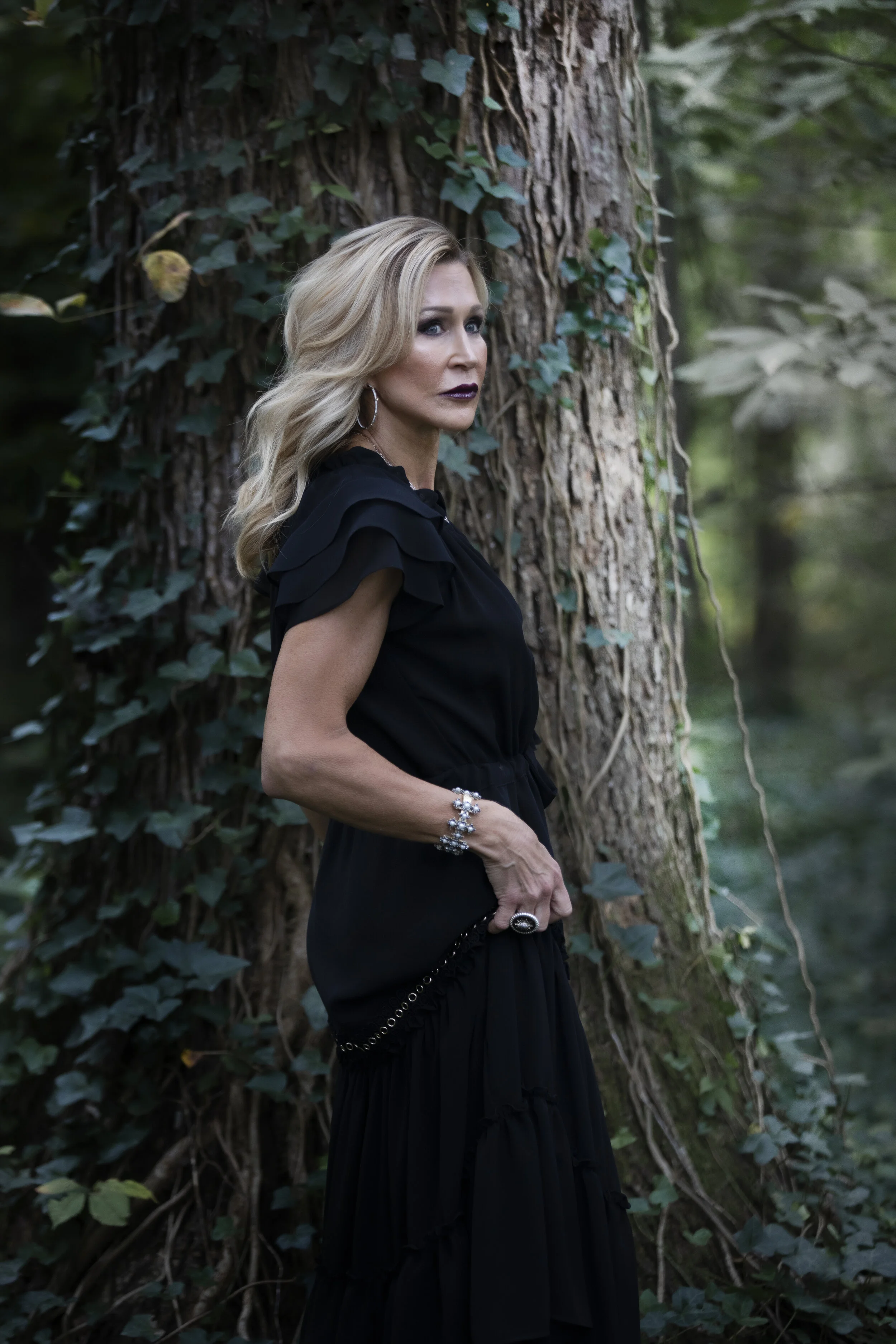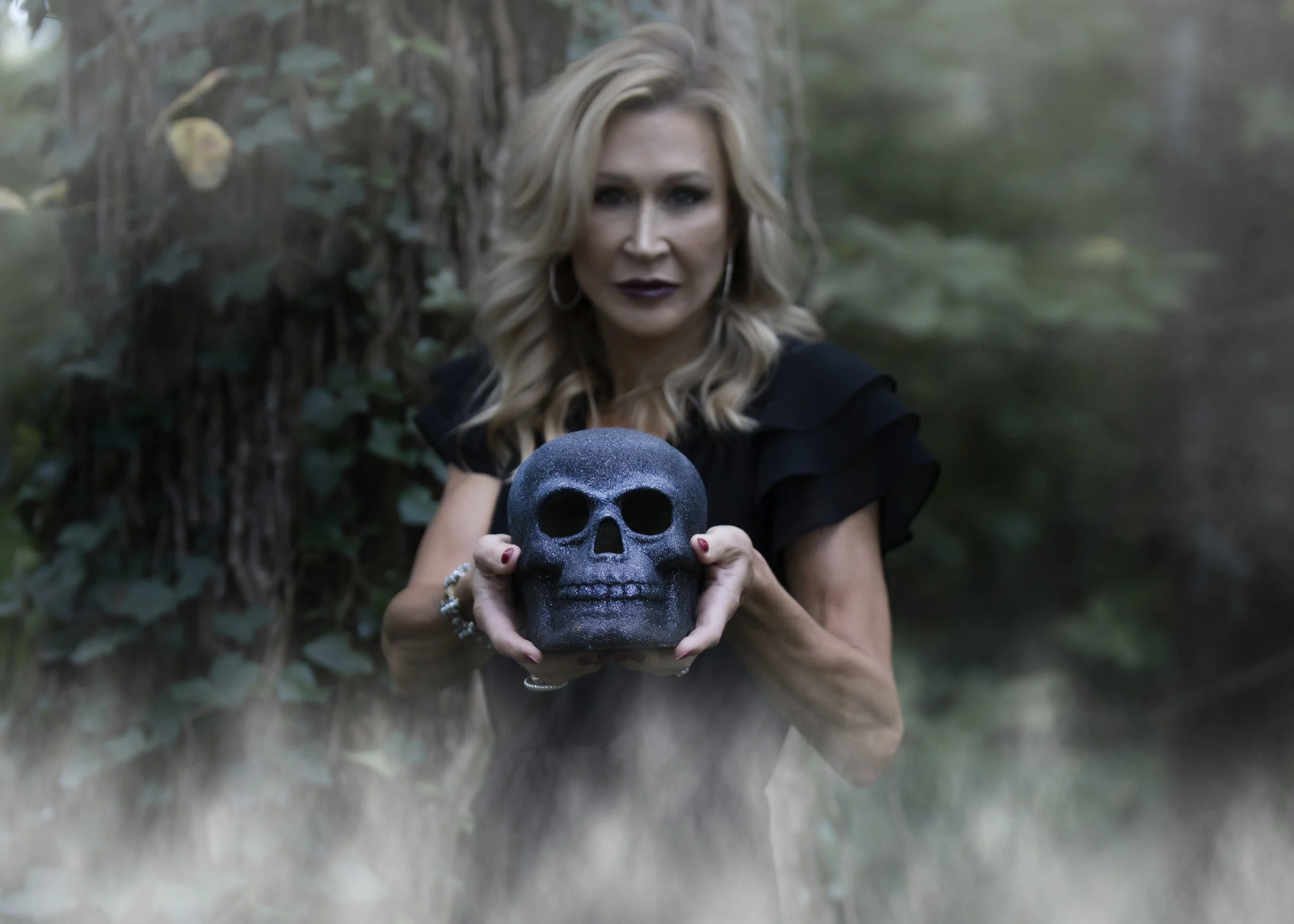Modern Day Witchcraft
With Halloween just around the corner, I thought it would be interesting to explore modern day witchcraft! Witches throughout history have not had the best reputation…they have been feared and often met with horrible deaths. Witchcraft has changed from an evil spell casting practice to an empowering feminine spiritual practice. Read on to learn more about witchcraft today…
Witchcraft beckons with the promise of a spirituality that is self-determined, antipatriarchal, and flexible enough to incorporate varied cultural traditions. ~ The Atlantic Magazine
Photography by Sara-Ann Photography
Witches are women who aren’t afraid of who they are. They don’t have to conjure magic, they are magic!
Let's just say that more or less of what we know about witches is hokum (hokum is defined as - trite, sentimental, or unrealistic situations and dialogue in a movie, play, or piece of writing). Witches do not wear pointy headgears, concoct potions in a huge cauldron, have a cackling laugh or warts all over their faces. These are only a few of the many stereotypical things that people think about witches and witchcraft.
As I was doing a little research on witchcraft, I was surprised at how interesting it all is. I was also surprised at how many words I had to look up. I’ve included a few definitions…just in case you are interested. This post is meant to be a fun and informative post in honor of Halloween, so here are a few interesting facts about witchcraft!
Not all witches are evil - Black Magic and White Magic
It sounds obvious because a lot of us know mostly about witchcraft from Bewitched, Wizard of Oz ,and Harry Potter. But in reality, witchcraft, throughout history, has had a very negative implication, so much so, that witches were given death sentences to cleanse the society (think the Salem witch hunts). However, practitioners of witchcraft aren’t (weren’t) always evil. White magic has traditionally referred to the use of supernatural powers or magic for selfless purposes (Wikipedia). Rituals that are mistakenly believed to be "bad" and therefore labeled "black magic" often come from traditions such as Hoodoo, which is traditional African folk magic. Black magic has traditionally referred to the use of supernatural powers or magic for evil and selfish purposes, when in truth, generally speaking, magic itself isn't simply "good" or "evil": It's a tool. As humans, we can all act selfish, jealous, and petty from time to time. We all have good sides that are also loving.
Very Few Witches Were Ever Burnt at a Stake
Only a handful of witches were ever burnt on stakes in real life. Even during the well-known Salem Witch Trials, 165 people were accused out of which 31 were imprisoned, of which 19 were sentenced to death. Out of those 19 people, 18 were women who were hanged to death. The one remaining was a man who refused to admit that he was a witch and was crushed to death with stones. So, killing as a sacrificial victim was never the primary means of execution. In America none of the accused were burnt (thank goodness).
If you ask someone what they think of when they hear the word ‘witch’ most people will come up with a similar image: old, haggard, ugly, bent-nosed, broomstick-laden and, above all, female.
Witchcraft is practiced by both women and men.
It was believed for the longest time that witchcraft was mostly a female activity. But there are many male witches, mostly referred to as wizards, warlocks or sorcerers. Men and women have been persecuted throughout history in suspicion of practicing witchcraft. so the stereotype of witches being female is inaccurate.
“Witchcraft was a crime in Europe during what is generally referred to as the early modern period: that is, the 15th, 16th and 17th centuries. Different countries enacted different laws to deal with witches but, for the most part, by the mid-16th century witchcraft was a secular crime, one that could be punished by imprisonment, pillory or execution. During this period, approximately 90,000 people were formally accused of witchcraft and about half of this number were executed. That’s 45,000 deaths.” ~ The University of Queensland
Witches were generally defined as people who made a pact with the Devil in exchange for magical power to commit evil acts.
Malleus Maleficarum - Believe it or not…there was a manual that became the witch-hunting manual of every witch-hunter.
“The Malleus Maleficarum (Latin for “The Hammer of Witches”, or “Hexenhammer” in German) is one of the most famous medieval treatises on witches. It was written in 1486 by Heinrich Kramer and Jacob Sprenger, and was first published in Germany in 1487. Its main purpose was to challenge all arguments against the existence of witchcraft and to instruct magistrates on how to identify, interrogate and convict witches.”
The book Malleus Maleficarum became the handbook on how to deal with a witch for the hysteric masses and witch-hunters. It was a legal and theological document written by two clergymen, which offered tips like shave the hair off the witch's body so that she can't hide magical objects. Hmmmm…..
Wicca is a new religious movement based on witchcraft.
Englishman Gerald Gardner created the Wicca religion and introduced it to the public in 1954. According to Gardner, Wicca emerged from a European witch-cult that was persecuted during the witch trials. The core of Wicca is formed of ancient pagan and 20th century hermetic (relating to an ancient occult tradition encompassing alchemy, astrology, and theosophy) concepts. You can read more about Wicca here.
Witches Don’t Only Come Out at Halloween
Halloween is more fun than serious and contrary to popular belief, it is not especially marked in a witch's calendar. If you’ve ever read The Mists of Avalon (one of my favorite books), or studied any pagan religions, you know that witches celebrate the first day of May or Beltane and Midsummer's eve that coincides with the summer solstice. In fact, Easter is associated with witches in Sweden. Folklore alleges that witches flew off on broomsticks to dance with the devil at Blåkulla (a legendary island where the Devil held his Earthly court during a witches' Sabbath).
Witchcraft is not Satanism
Witchcraft is rooted in pagan beliefs and most of the pagan belief systems are not Christian beliefs. These pagan systems do not have any concept of Satan and hence, worshiping him (as it relates to Christianity) does not make any sense. Satanists, on the other hand, worship Lucifer. Satanism has existed for almost as long as Christianity has…who knew?!
“From the gender pay-gap to taboos around menstruation, there are still prescribed ways around how women are expected to behave. So women harnessing their own power (through witchcraft) sounds a bit dangerous to a world that’s still largely structured by patriarchal norms.”
Witches Used Broomsticks to fly (or not)…
“It is one of the facts harder to believe but not if you take it figuratively. Practitioners of witchcraft experimented with herbs and potions. And in doing so, they might have used a mandrake plant, which has hallucinatory properties that can cause euphoria. There were rituals that were performed in the nude and involved rubbing a herbal ointment that contained mandrake. After the ointment was put in the private parts, it caused a floating sensation. That sensation has been likened to that of floating on a broomstick.” I can’t remember where I found this…but very interesting!
On that note, I’ll end...
I hope you’ve enjoyed this Witchcraft 101 post as much as I’ve enjoyed writing it. It’s fun to do something a little different every now and then!
Thank you so much to Sara-Anne Photography for taking these pictures!






